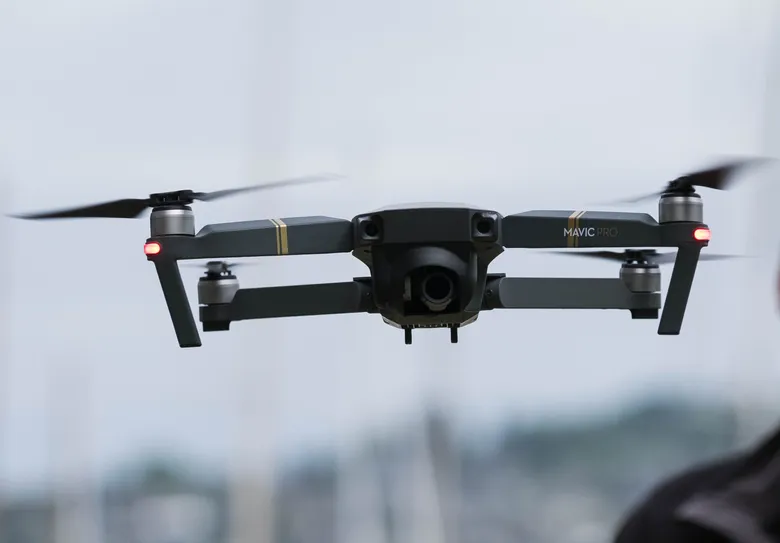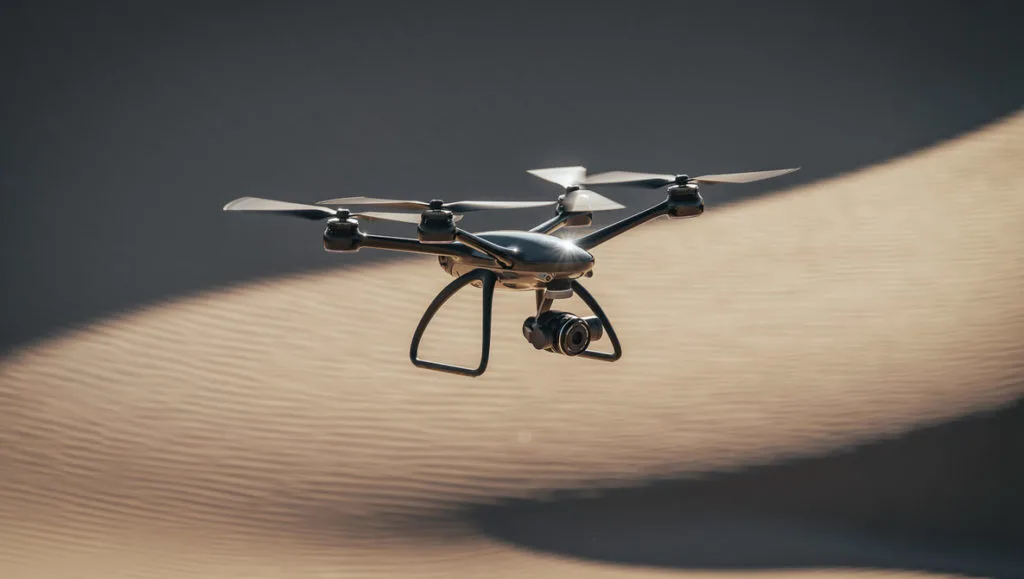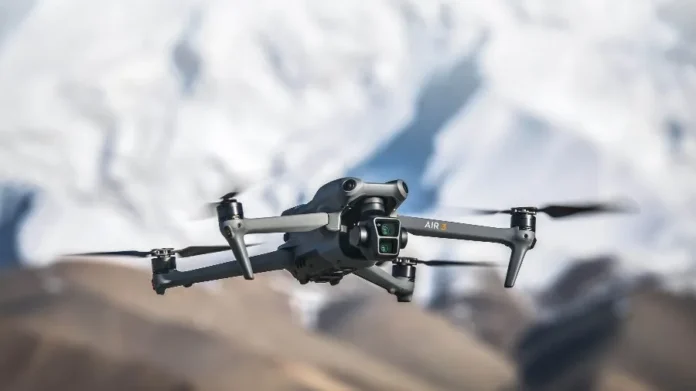Drones have rapidly evolved from niche gadgets to essential tools used in photography, agriculture, delivery services, and even emergency response. Their versatility and advanced features have made them popular among hobbyists, professionals, and commercial industries. A critical factor determining a drone’s usefulness is its flight range and how far it can travel while maintaining control and stable communication. Whether you’re a recreational flyer capturing scenic views or a business relying on drones for operations, understanding flight range is key to maximizing efficiency and safety. In this article, we’ll explore the factors that affect how far drones can fly, compare the typical ranges of different drone types, and share practical tips to help you extend your drone’s reach.
What is a Drone Flight Range?
Drone flight range refers to the maximum distance a drone can travel from its controller while maintaining a stable connection. It includes two key aspects: the control range, which is how far you can actively control the drone, and the transmission range, which determines how far video or data signals can be sent back to the controller. Flight range is crucial for various applications. Recreational flyers need it to explore wide areas, photographers rely on it to capture distant landscapes, and delivery services depend on extended ranges for efficient operations.
Factors That Affect Drone Flight Range
When it comes to how far a drone can fly, several key factors play a role in determining its maximum range. Understanding these elements can help you optimize your drone’s performance and avoid unexpected flight issues. Here’s a breakdown of the most important factors:
1. Battery Life
Battery life is one of the most critical factors affecting a drone’s flight range. Drones rely on rechargeable lithium-polymer (LiPo) batteries to determine how long and far they can fly. A higher-capacity battery generally allows for longer flights, but it also adds Weight, which can reduce efficiency. Additionally, temperature can influence battery performance, with cold weather causing faster drainage. To maximize range, maintaining a fully charged, well-conditioned battery is essential.
2. Signal Strength
Signal strength determines how well the drone communicates with the controller. Most drones use radio frequencies like 2.4 GHz or 5.8 GHz, with each offering different advantages. While 2.4 GHz provides a better range, 5.8 GHz offers stronger performance in crowded environments. Signal boosters and high-quality antennas can improve range, but obstacles such as buildings, trees, or mountains can weaken the signal, leading to potential disconnections. Ensuring a clear line of sight between the drone and the controller helps maintain strong communication.
3. Environmental Conditions
Weather and environmental factors significantly impact drone flight range. Strong winds can drain the battery faster as the drone works harder to maintain stability. Rain, fog, and extreme temperatures can also affect both the drone’s hardware and battery efficiency. Physical obstacles like tall buildings, dense forests, or rugged terrains can block signals, reducing the effective control range. Flying in open areas with mild weather conditions helps achieve optimal performance.
4. Drone Design
The physical design of a drone plays a vital role in its flight capabilities. Lightweight drones with aerodynamic shapes experience less air resistance, allowing them to fly farther on the same battery power. Drones with foldable arms, streamlined bodies, and efficient propeller designs are often optimized for longer flights. Additionally, the quality of the motors and electronic speed controllers (ESCs) affects how efficiently the drone uses energy, influencing its range.
5. Interference
Electromagnetic interference (EMI) from other electronic devices can disrupt a drone’s communication signals. Urban environments with Wi-Fi networks, power lines, cell towers, and metal structures create “signal noise” that weakens the connection between the drone and its controller. This interference can cause lag, signal loss, or even unresponsive drones. To reduce the risk, fly in areas with minimal electronic congestion and adjust your drone’s frequency settings if possible.
Long-Range Drones: What Makes Them Different?
Long-range drones are designed to cover greater distances than standard consumer drones, thanks to a combination of advanced technologies and specialized features. They often utilize advanced battery technology, such as high-capacity lithium-polymer or lithium-ion packs, to provide extended flight times.
Additionally, high-powered antennas and communication systems enhance signal strength, allowing stable control and data transmission over vast distances.
Using lightweight materials, like carbon fiber and composite alloys, improves aerodynamic efficiency while reducing energy consumption. Notable long-range drones include the DJI Mavic 3 for professional photography and the Autel EVO II for industrial applications, both known for their impressive range and durability in challenging environments.
How to Maximize Your Drone’s Flight Range

Extending your drone’s flight range can significantly enhance its performance, whether you’re capturing breathtaking aerial shots or conducting professional operations. Here are key strategies to help you get the most out of your drone’s capabilities:
1. Battery Management and Upgrades
Proper battery management is essential for maximizing flight range. Using high-capacity batteries allows your drone to fly longer without frequent recharges. However, it’s not just about capacity proper charging techniques are vital. Always charge your batteries fully before each flight, avoid overcharging, and store them at room temperature to maintain their health. Regularly check for battery wear and consider upgrading to more advanced models if your drone supports them.
2. Optimal Flying Conditions
Environmental factors greatly influence flight range. Flying in optimal conditions, such as on clear, calm days, helps conserve battery power. Avoid strong winds, which force your drone to work harder, draining energy faster. Additionally, flying at moderate altitudes can improve signal strength, reducing interference from obstacles like buildings or trees. Always check weather conditions before flying to ensure a stable, efficient flight.
3. Upgrading Antennas
Signal strength is crucial for maintaining control over long distances. Upgrading your drone’s antennas or using range extenders can significantly boost communication between the controller and the drone. High-gain antennas focus the signal more effectively, reducing the risk of disconnection.
4. Minimizing Weight
The heavier your drone, the more energy it consumes to stay airborne. To maximize flight range, minimize unnecessary payloads like extra cameras, accessories, or protective gear that aren’t essential for the mission. Using lightweight materials for any add-ons and streamlining your drone’s design can reduce drag and improve energy efficiency. This allows the drone to fly farther on the same battery charge.
Legal and Safety Restrictions on Drone Flight Range
When operating drones, it’s crucial to understand the legal and safety restrictions that govern flight range. These rules are designed to ensure drone operators’ and public safety while maintaining airspace integrity.
1. FAA Regulations (or Local Aviation Laws)
The Federal Aviation Administration (FAA) regulates drone operations in the United States. One key rule is to keep drones within the operator’s visual line of sight (VLOS), limiting how far you can legally fly, regardless of the drone’s technical range. Altitude limits are typically capped at 400 feet above ground level to prevent interference with human-crewed aircraft. Some countries have similar or even stricter regulations, so it’s important to familiarize yourself with local aviation laws wherever you fly.
2. No-Fly Zones
Certain areas are designated as no-fly zones due to security and safety concerns. These include airports, military bases, government buildings, and other sensitive locations. Drones are strictly prohibited in these zones unless special permission is granted. Many modern drones have geofencing technology that automatically restricts flights in these areas, helping operators comply with the law.
3. Importance of Maintaining Visual Line of Sight (VLOS)
Maintaining a visual line of sight (VLOS) isn’t just a legal requirement it’s a critical safety measure. Keeping your drone within sight helps you quickly respond to unexpected obstacles, changing weather conditions, or potential technical malfunctions. Losing sight of your drone increases the risk of accidents, including collisions with people, property, or other aircraft.
How Far Can Each Type of Drone Fly?

| Drone Category | Average Flight Range | Describre/ use cases |
| Toy Drones | 50 – 100 meters (164 – 328 feet) | Models for kids or beginners with limited range and simple controls. |
| Consumer Drones | 1 – 5 kilometers (0.6 – 3 miles) | Popular for photography, and videography with decent range. |
| Professional Drones | 5 – 15 kilometers (3 – 9 miles) | Commercial photography, filmmaking, and mapping with advanced features. |
| Commercial/Industrial Drones | 15 – 30 kilometers (9 – 18 miles) | Designed for agriculture, inspections, and deliveries with strong connectivity. |
| Military Drones | 100+ kilometers (62+ miles) | Equipped with cutting-edge tech for surveillance, reconnaissance, and defense. |
| Long-Range Drones (Specialized) | 200+ kilometers (124+ miles) | High-end models for scientific research, environmental monitoring, and logistics. |
Note: Actual flight ranges may vary depending on environmental conditions, signal interference, and battery performance. Always consult the manufacturer’s specifications and regulations before planning your flight.
Future of Drone Flight Ranges
The future of drone flight ranges looks promising, driven by rapid technological advancements. Emerging technologies, such as solar-powered drones and improved battery efficiency, are set to revolutionize how far drones can travel. Solar-powered models can stay airborne for days, while cutting-edge battery innovations aim to deliver longer flight times with faster charging.
As these technologies evolve, drones will play an even bigger role in global logistics, precision agriculture, and emergency response, reaching remote areas more easily. Over the next decade, we can expect significant growth in drone range capabilities, with smarter energy management systems, AI-driven flight optimization, and enhanced communication networks pushing the boundaries of what’s possible.
Summary
Understanding the factors influencing a drone’s flight range is essential for hobbyists and professionals. Each element is critical in determining how far your drone can go, from battery life and signal strength to environmental conditions and drone design. While technological advancements have significantly extended flight ranges especially for commercial and military drones legal regulations like maintaining visual line of sight and avoiding no-fly zones remain important for safe and responsible flying.
As drone technology continues to evolve with innovations like solar power and advanced batteries, the future holds exciting possibilities for even greater distances and expanded applications. Knowing your drone’s capabilities and limitations will help you get the most out of every flight, whether you’re flying for fun or for work.
Read Also: How Fast Do Helicopters Travel?



